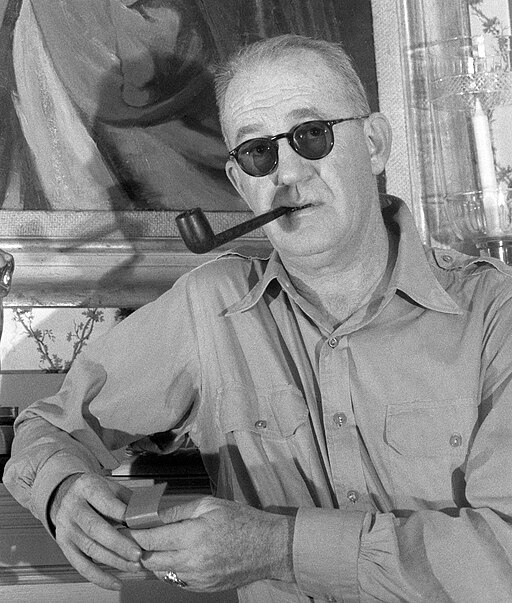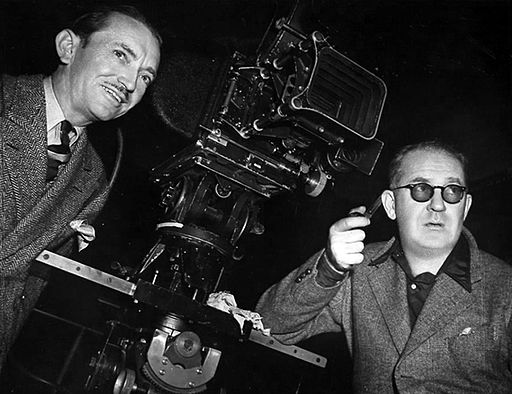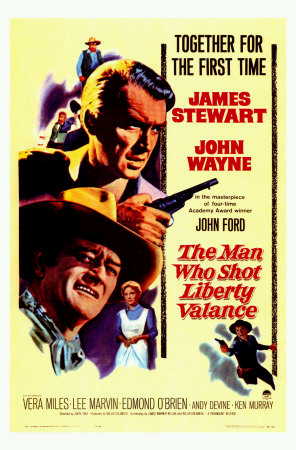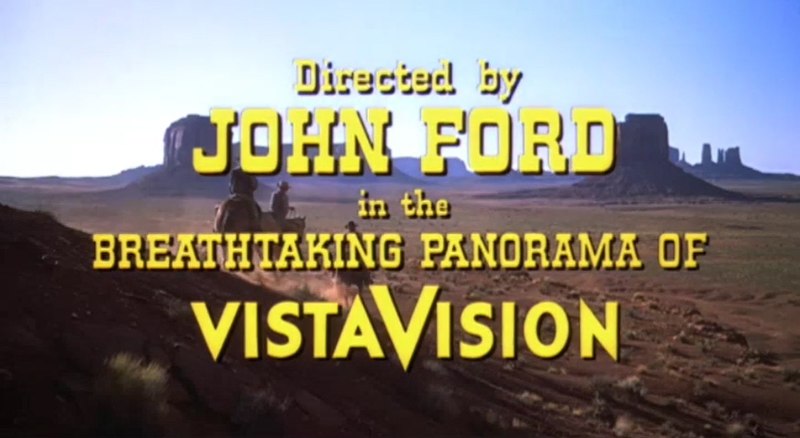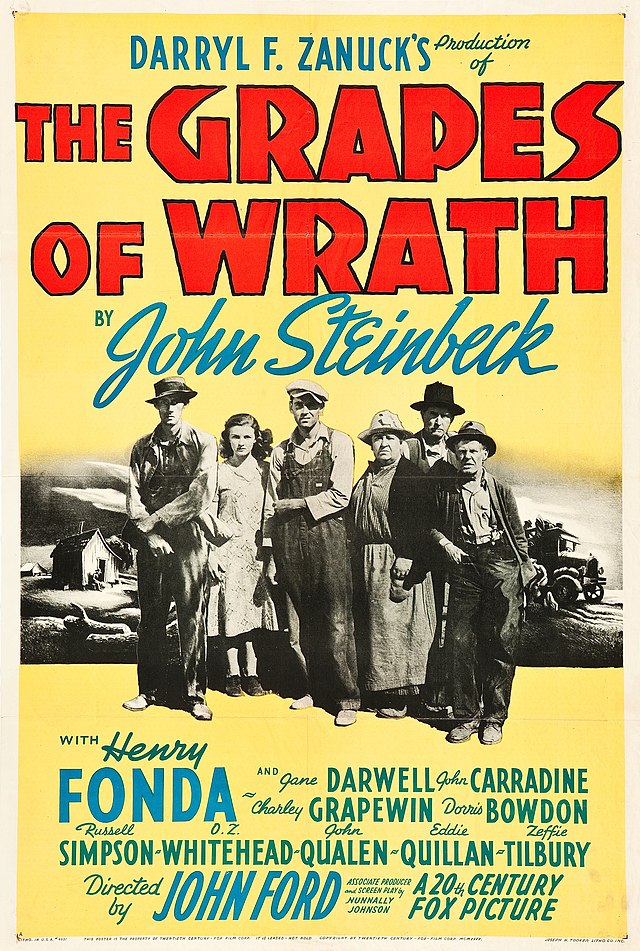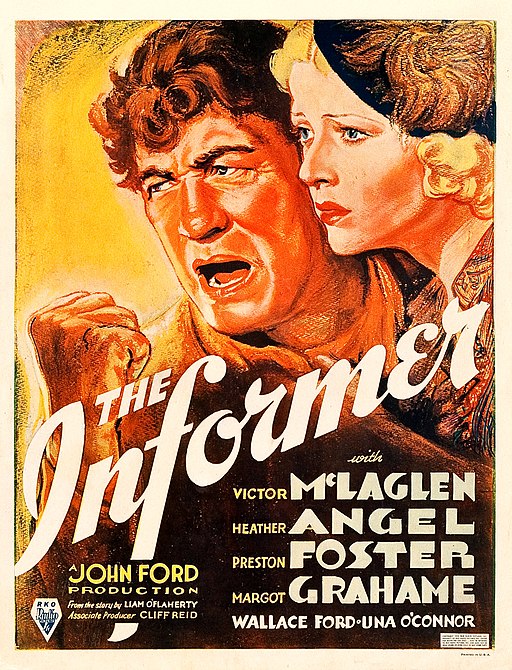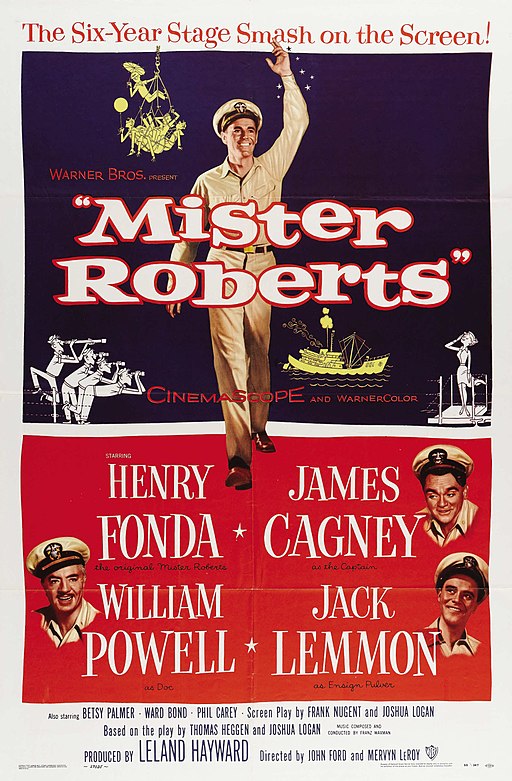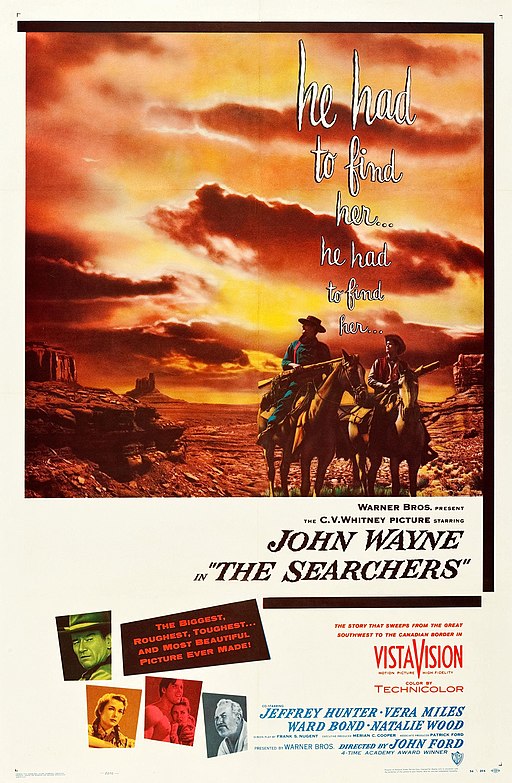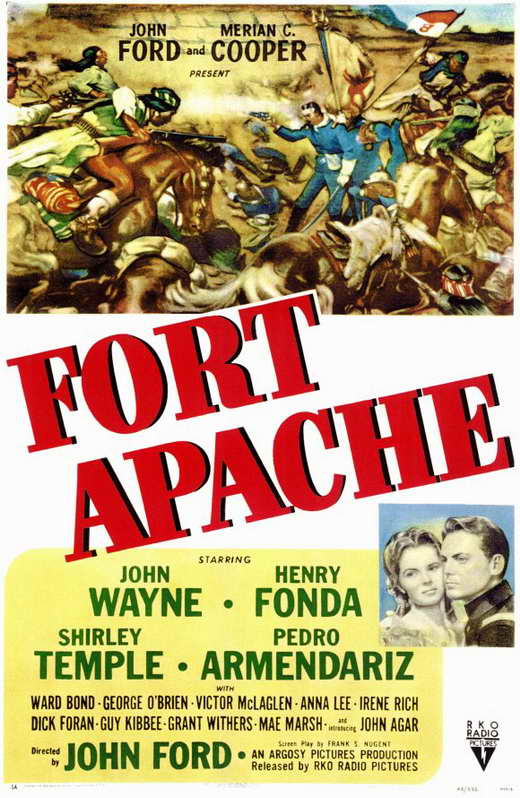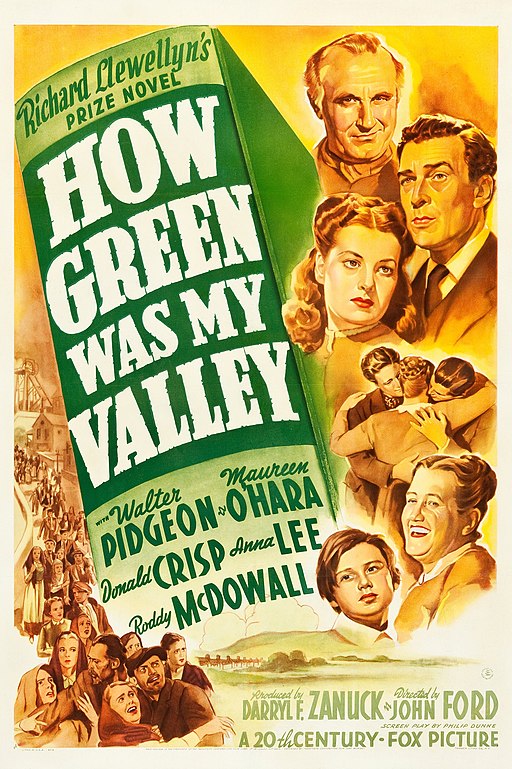John Ford
back| Full Name | John Martin Feeney |
| Born | February 1, 1894 |
| Birthplace | Cape Elizabeth, Maine, U.S. |
| Died | August 31, 1973 |
| Buried | Holy Cross Cemetery, Culver City, California, U.S. |
| Married to | Mary McBryde Smith (m. 1920–1973, his death) |
| Children | Barbara Ford and Patrick Ford |
| Notable films | Stagecoach - The Grapes of Wrath - The Searchers - Rio Grande - Fort Apache |
John Ford – The grand “Pappy” of Western movies
John Ford, born as John Martin Feeney on February 1, 1894, in Cape Elizabeth, Maine, transformed into one of the most esteemed directors in Hollywood history. His career, spanning over five decades, earned him an unparalleled four Academy Awards for Best Director. Ford mastered the art of storytelling, creating timeless classics across various genres, but he predominantly shone in Westerns and dramas.
Ford’s collaboration with actor John Wayne resulted in some of cinema’s most iconic films, including "Stagecoach" (1939), "The Searchers" (1956), and "The Man Who Shot Liberty Valance" (1962). His ability to craft compelling narratives, coupled with his innovative use of camera techniques, set new standards in filmmaking.
His other notable works include the poignant "The Grapes of Wrath" (1940), exploring the despair of the Great Depression, and the poignant "How Green Was My Valley" (1941), a masterful portrayal of Welsh village life, both winning him Oscars. Ford’s films often centered on themes of community, morality, and the complexities of the human spirit.
John Ford was often referred to as "Pappy" by his actors and close associates. This nickname reflects his authoritative yet paternal presence on set.
Related
John Ford – Biography, analysis and all his movies
Early Life and Career Beginnings
John Martin Feeney, later known as John Ford, was born on February 1, 1894, in Cape Elizabeth, Maine. He was the 10th of 11 children in an Irish-American family. In 1914, Ford moved to Hollywood, following his older brother Francis, who had established himself as a successful actor and director. John began his career in film as an actor, stuntman, and occasional assistant director.
Transition to Directing
By the mid-1910s, Ford had transitioned to directing, showcasing a natural talent for storytelling and visual composition. His early work consisted of short films and serials, primarily in the Western genre. He rapidly developed a reputation for efficient, reliable filmmaking, catching the attention of major studios.
The Silent Era
During the silent film era, Ford directed numerous successful films, including "The Iron Horse" (1924), an epic Western that displayed his ability to craft grand, sweeping narratives. He honed his skills, experimenting with visual storytelling and character development.
Sound Films and Critical Acclaim
With the advent of sound films, Ford's career took a significant leap forward. His adaptation of "Stagecoach" (1939) is widely credited with elevating the Western genre, introducing deeper, more complex characters and narratives. The film also marked the beginning of Ford’s iconic collaboration with actor John Wayne.
World War II and Post-War Success
Ford served in the United States Navy during World War II, directing several documentaries for the military. After the war, he continued to direct critically acclaimed films, including "My Darling Clementine" (1946), "Fort Apache" (1948), and "The Quiet Man" (1952), the latter of which won him his fourth Academy Award for Best Director.
Late Career and Legacy
In the 1960s, Ford’s health began to decline, and he directed fewer films. However, his impact on the industry remained profound. He was known for his distinctive visual style, his ability to extract powerful performances from actors, and his unwavering commitment to his craft.
Personal Life and Death
Ford was known to be a tough, sometimes irascible figure on set, but he was also deeply respected by his colleagues. He was married to Mary McBryde Smith from 1920 until his death, and they had two children together. John Ford passed away on August 31, 1973, at the age of 79.
Burial
He was interred at Holy Cross Cemetery in Culver City, California.
Influence and Recognition
John Ford's influence on the world of cinema is immeasurable. He helped define and elevate the Western genre, but his work extended beyond any single category. He was a master storyteller, a visionary director, and a central figure in the golden age of Hollywood. Ford's legacy endures, and his films continue to be celebrated for their artistic excellence, emotional depth, and timeless appeal.
John Ford’s work with John Wayne
John Ford and John Wayne shared one of the most famous and enduring partnerships in Hollywood history. Their collaboration spanned over three decades, producing some of the most iconic films in the Western genre and solidifying both of their careers.
Early Years and Breakthrough
John Wayne's first lead role was in Ford’s epic Western "The Big Trail" (1930), but the film was not a success at the time. It wasn’t until their collaboration on "Stagecoach" (1939) that Wayne’s career truly took off. Ford is credited with transforming Wayne from a B-movie actor into a bona fide star. The film showcased Wayne’s rugged charm and potential as a leading man, setting the tone for many of their future collaborations.
Professional Relationship
Ford was known for his gruff demeanor and demanding directing style, and he did not spare Wayne from his tough love. Despite the director’s harsh methods, Wayne respected Ford immensely and was deeply loyal to him. Ford, in turn, was instrumental in shaping Wayne's on-screen persona, molding him into the archetypal Western hero—stoic, strong, and principled. They would go on to work together on more than 20 films, including seminal works like "The Searchers" (1956), "She Wore a Yellow Ribbon" (1949), and "The Man Who Shot Liberty Valance" (1962).
Personal Relationship
Beyond their professional partnership, Ford and Wayne also shared a complex personal relationship. They were close friends and spent considerable time together off-set, often engaging in pranks and shared jokes. However, Ford was known to be emotionally manipulative and would sometimes humiliate Wayne in front of the crew, behavior that Wayne tolerated because of his deep respect and admiration for Ford.
Conclusion of their partnership
The Ford-Wayne partnership is widely regarded as one of the most successful director-actor collaborations in film history. Their films together not only defined the Western genre but also had a profound impact on the development of American cinema. The characters Wayne portrayed in Ford’s films embodied the ideals and myths of American culture and heroism, and his performances in these roles are among the most memorable and celebrated of his career.
Ford’s influence on Wayne was profound, and Wayne often credited Ford with his success. In return, Wayne’s performances helped solidify Ford’s reputation as a master storyteller and one of the greatest directors of all time.
Remarkable quotes from John Ford:
John Ford was a man of few words, but when he spoke, he often left a lasting impact.
On Filmmaking: “When the legend becomes fact, print the legend.”
- This famous line from "The Man Who Shot Liberty Valance" (1962) encapsulates Ford’s approach to storytelling, emphasizing the power of myth and legend over strict historical accuracy.
On Directing Actors: “I love making pictures but I don’t like talking about them.”
- Ford was known for his terse communication style and his preference for action over words.
On Life and Death: “You can speak well if your tongue can deliver the message of your heart.”
- Ford valued authenticity and believed in the power of genuine emotion to connect with an audience.
On Success: “My name’s John Ford. I make Westerns.”
- Despite his diverse filmography, Ford was humble about his accomplishments and often downplayed his skills, preferring to let his work speak for itself.
On Art: “A director is a man who presides over accidents.”
- Ford recognized the chaotic nature of filmmaking and embraced the unpredictability, turning accidents into art.
On his Work: “I don’t give a damn about the money, but I do care about the hundreds of people who work for me.”
- Ford was known for his loyalty to his crew and his belief in the collaborative nature of filmmaking.
On Critics: “It doesn’t matter what I think of my films. The critic’s opinion doesn’t matter either. There’s only one opinion that really counts and that’s the opinion of the paying public.”
- Ford maintained a practical approach to filmmaking, prioritizing the audience’s enjoyment above all else.
On Style: “I make Westerns. Other people make adventures or dramas.”
- Ford had a clear sense of his own style and genre preferences, embracing his role as a master of Westerns.
On Simplicity: “The secret to making movies is simplicity.”
- Ford was a proponent of straightforward storytelling and believed in the power of simple, yet effective, cinematic techniques.
On Legacy: “I don’t make pictures just to make money. I make money to make more pictures.”
- Ford was deeply passionate about filmmaking, viewing it as both an art form and a lifelong pursuit.
Analysis of John Ford’s direction style:
His direction style is often celebrated for its combination of visual grandeur, narrative depth, and complex characterizations. Below is an analysis of the key elements of Ford's directorial style:
Visual Aesthetics and Composition
- Scenic Landscapes: Ford had a deep affinity for outdoor settings, often using the vast, majestic landscapes as a character in their own right. His films frequently featured sweeping shots of nature, particularly Monument Valley, which became a signature visual element in his work.
- Deep Focus: He employed deep focus cinematography, keeping both the foreground and background in sharp focus, allowing audiences to fully immerse themselves in the film’s setting.
- Silhouettes: Ford used silhouette shots effectively, creating memorable and iconic images that highlighted the isolation or contemplation of characters.
Storytelling and Themes
- Moral Ambiguity: Ford's films often delved into the complexity of human nature, avoiding clear-cut distinctions between good and evil. His characters were multifaceted, showcasing both strengths and flaws.
- Nostalgia and Mythmaking: He had a penchant for nostalgia, creating films that celebrated the American past while also critiquing its shortcomings. Ford contributed significantly to the mythmaking of the American West.
- Social Commentary: His works frequently contained subtle (and sometimes not-so-subtle) social and political commentary, addressing issues such as racism, war, and the clash between tradition and progress.
Collaboration and Performance
- Actor’s Director: Ford was known for his ability to elicit powerful performances from actors. He had long-standing collaborations with actors like John Wayne, Maureen O’Hara, and Henry Fonda, helping to shape their careers.
- Stock Company: Ford often worked with a “stock company” of actors, crew members, and writers, creating a familial atmosphere on set and ensuring a consistent quality across his films.
Genre and Innovation
- Master of Westerns: While Ford worked in various genres, he is most celebrated for his contributions to the Western genre, revitalizing it and elevating it to a level of critical acclaim.
- Innovation: Despite his reputation for being a traditionalist, Ford was innovative in his techniques, experimenting with sound, editing, and storytelling throughout his career.
Legacy and Influence
- Enduring Impact: Ford’s influence on cinema is profound, with directors from Orson Welles to Steven Spielberg citing him as a major inspiration.
- Awards and Recognition: He holds the record for the most Academy Awards won for Best Director, a testament to his unparalleled skill and impact on the industry.
John Ford’s directorial style is a study in contrasts — blending grand visual poetry with intimate character studies, and mythic storytelling with sharp social commentary. His legacy endures as one of the greatest directors in the history of cinema.
Awards and Nominations:
John Ford, one of the most celebrated directors in Hollywood history, garnered numerous awards and nominations throughout his prolific career.
Academy Awards (Oscars)
- 1933: Nominated for Best Director – "Arrowsmith"
- 1935: Won Best Director – "The Informer"
- 1936: Nominated for Best Director – "The Informer" (write-in candidate)
- 1937: Nominated for Best Director – "Stagecoach"
- 1940: Won Best Director – "The Grapes of Wrath"
- 1941: Won Best Director – "How Green Was My Valley"
- 1952: Won Best Director – "The Quiet Man"
- 1952: Nominated for Best Picture – "The Quiet Man" (as producer)
- 1963: Received the Irving G. Thalberg Memorial Award (Honorary Oscar)
Directors Guild of America (DGA) Awards
- 1950: Nominated for Outstanding Directorial Achievement in Motion Pictures – "She Wore a Yellow Ribbon"
- 1952: Nominated for Outstanding Directorial Achievement in Motion Pictures – "The Quiet Man"
- 1956: Won Outstanding Directorial Achievement in Motion Pictures – "Mister Roberts" (shared with Mervyn LeRoy)
- 1957: Nominated for Outstanding Directorial Achievement in Motion Pictures – "The Searchers"
- 1962: Nominated for Outstanding Directorial Achievement in Motion Pictures – "The Man Who Shot Liberty Valance"
- 1973: Received the DGA's Lifetime Achievement Award
Venice Film Festival
- 1952: Won the Silver Lion – "The Quiet Man"
- 1953: Won the Bronze Lion – "Mogambo"
- 1956: Received the OCIC Award - Honorable Mention – "The Searchers"
Cannes Film Festival
- 1949: Won the Grand Prize of the Festival – "The Quiet Man"
Other Awards and Honors
- Ford received the Presidential Medal of Freedom in 1973.
- He received the AFI Life Achievement Award in 1973.
- He was awarded the Golden Plate Award of the American Academy of Achievement in 1966.
- He was a recipient of the Legion of Merit for his service in World War II.
- He received an Honorary Doctorate from the University of Navarra in 1958.
John Ford – His most notable movies:
"Stagecoach" (1939):
A pivotal Western that helped redefine the genre and made John Wayne a star.
"The Grapes of Wrath" (1940):
A critically acclaimed adaptation of John Steinbeck's novel about the Dust Bowl and the struggles of a displaced Oklahoma family.
"How Green Was My Valley" (1941):
A heartfelt story of a Welsh mining family, which won Ford his third Academy Award for Best Director.
"My Darling Clementine" (1946):
A stylized and influential retelling of the gunfight at the O.K. Corral.
"Fort Apache" (1948):
The first installment in Ford’s famed “Cavalry Trilogy,” showcasing the complexity of frontier life and military duty.
"She Wore a Yellow Ribbon" (1949):
The second of the “Cavalry Trilogy,” recognized for its stunning Technicolor cinematography.
"Rio Grande" (1950):
The final film in the “Cavalry Trilogy,” starring John Wayne and Maureen O'Hara.
"The Quiet Man" (1952):
A romantic dramedy set in Ireland, starring John Wayne and Maureen O'Hara.
"The Searchers" (1956):
Often cited as one of the greatest western films ever made, this Western follows a man’s quest to save his niece from a Native American tribe.
"The Man Who Shot Liberty Valance" (1962):
A complex tale about the transition from the Old West to modern civilization, starring John Wayne and James Stewart.
Full list of movies directed by John Ford:
1910s
- The Tornado (1917)
- The Trail of Hate (1917)
- The Scrapper (1917)
- The Soul Herder (1917)
- Straight Shooting (1917)
- The Secret Man (1917)
- A Marked Man (1917)
- Bucking Broadway (1917)
- The Phantom Riders (1918)
- Wild Women (1918)
- Thieves' Gold (1918)
- The Scarlet Drop (1918)
- Hell Bent (1918)
- A Woman's Fool (1918)
- Three Mounted Men (1918)
- The Rattler's Hiss (1918)
- Riders of Vengeance (1919)
- The Outcasts of Poker Flat (1919)
- Ace of the Spades (1919)
- Rider of the Law (1919)
- A Gun Fightin' Gentleman (1919)
- Marked Men (1919)
1920s
- The Prince of Avenue A (1920)
- The Girl in Number 29 (1920)
- Hitchin' Posts (1920)
- Just Pals (1920)
- The Big Punch (1921)
- The Freeze-Out (1921)
- The Wallop (1921)
- Desperate Trails (1921)
- Action (1921)
- Sure Fire (1921)
- Jackie (1921)
- Little Miss Smiles (1922)
- Silver Wings (1922)
- The Village Blacksmith (1922)
- The Face on the Bar-Room Floor (1923)
- Three Jumps Ahead (1923)
- Cameo Kirby (1923)
- North of Hudson Bay (1923)
- Hoodman Blind (1923)
- The Man Who Came Back (1924)
- Hearts of Oak (1924)
- Lightnin' (1925)
- Kentucky Pride (1925)
- Thank You (1925)
- The Fighting Heart (1925)
- The Shamrock Handicap (1926)
- 3 Bad Men (1926)
- The Blue Eagle (1926)
- Upstream (1927)
- Mother Machree (1928)
- Four Sons (1928)
- Riley the Cop (1928)
- Strong Boy (1929)
- The Black Watch (1929)
- Salute (1929)
1930s
- Men Without Women (1930)
- Born Reckless (1930)
- Up the River (1930)
- Seas Beneath (1931)
- The Brat (1931)
- Arrowsmith (1931)
- Air Mail (1932)
- Flesh (1932)
- Pilgrimage (1933)
- Doctor Bull (1933)
- The Lost Patrol (1934)
- The World Moves On (1934)
- Judge Priest (1934)
- The Whole Town's Talking (1935)
- The Informer (1935)
- Steamboat Round the Bend (1935)
- The Prisoner of Shark Island (1936)
- Mary of Scotland (1936)
- The Plough and the Stars (1936)
- Wee Willie Winkie (1937)
- The Hurricane (1937)
- Four Men and a Prayer (1938)
- Submarine Patrol (1938)
- Stagecoach (1939)
- Young Mr. Lincoln (1939)
- Drums Along the Mohawk (1939)
1940s
- The Grapes of Wrath (1940)
- The Long Voyage Home (1940)
- Tobacco Road (1941)
- How Green Was My Valley (1941)
- They Were Expendable (1945)
- My Darling Clementine (1946)
- The Fugitive (1947)
- Fort Apache (1948)
- 3 Godfathers (1948)
- She Wore a Yellow Ribbon (1949)
1950s
- When Willie Comes Marching Home (1950)
- Wagon Master (1950)
- Rio Grande (1950)
- The Quiet Man (1952)
- What Price Glory (1952)
- The Sun Shines Bright (1953)
- Mogambo (1953)
- The Long Gray Line (1955)
- Mister Roberts (1955, co-directed with Mervyn LeRoy)
- The Searchers (1956)
- The Wings of Eagles (1957)
- The Rising of the Moon (1957)
- Gideon's Day (1958)
- The Last Hurrah (1958)
- The Horse Soldiers (1959)
1960s
- Sergeant Rutledge (1960)
- Two Rode Together (1961)
- The Man Who Shot Liberty Valance (1962)
- How the West Was Won (1962, co-directed with Henry Hathaway and George Marshall)
- Donovan's Reef (1963)
- Cheyenne Autumn (1964)
- 7 Women (1966)
1970s
- The Vietnam War (1971) (TV documentary)

